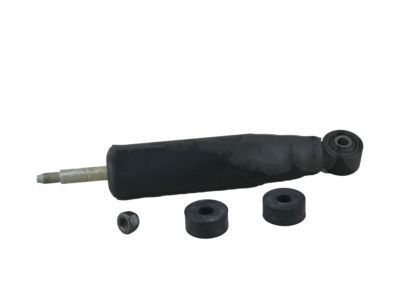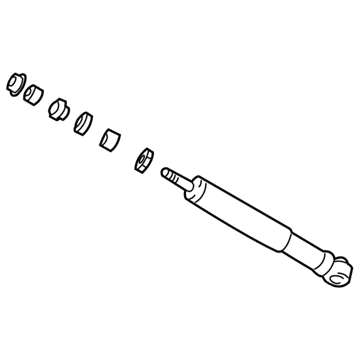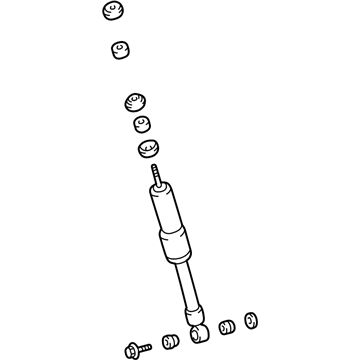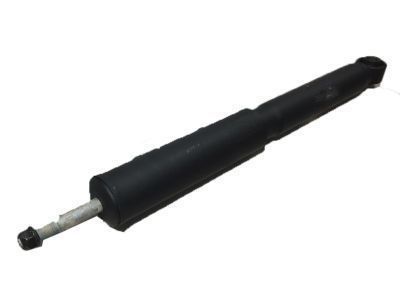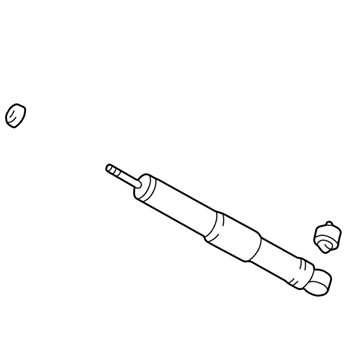×
ToyotaParts- Hello
- Login or Register
- Quick Links
- Live Chat
- Track Order
- Parts Availability
- RMA
- Help Center
- Contact Us
- Shop for
- Toyota Parts
- Scion Parts
My Garage
My Account
Cart
OEM 2002 Toyota Land Cruiser Shock Absorber
Suspension Shock Absorber- Select Vehicle by Model
- Select Vehicle by VIN
Select Vehicle by Model
orMake
Model
Year
Select Vehicle by VIN
For the most accurate results, select vehicle by your VIN (Vehicle Identification Number).
3 Shock Absorbers found

2002 Toyota Land Cruiser Shock Absorber, Front
Part Number: 48511-69585$57.47 MSRP: $79.99You Save: $22.52 (29%)Ships in 1-3 Business DaysProduct Specifications- Other Name: Absorber Set, Shock; Shock Absorber, Front; Suspension Shock Absorber; Shock
- Position: Front
- Replaces: 48511-69565, 48511-69455, 48511-69467, 48511-69625, 48511-69466
- Item Weight: 5.60 Pounds
- Item Dimensions: 27.9 x 8.5 x 7.7 inches
- Condition: New
- SKU: 48511-69585
- Warranty: This genuine part is guaranteed by Toyota's factory warranty.

2002 Toyota Land Cruiser Shock Absorber
Part Number: 48531-69835$63.50 MSRP: $89.14You Save: $25.64 (29%)Product Specifications- Other Name: Absorber Set, Shock; Shock Absorber, Rear; Suspension Shock Absorber; Shock; Absorber Assembly, Shock, Rear Passenger Side; Absorber Assembly, Shock, Rear Driver Side
- Manufacturer Note: MARK 48531-60682
- Replaces: 48531-69685, 48531-69775
- Item Weight: 7.20 Pounds
- Item Dimensions: 27.4 x 7.1 x 6.0 inches
- Condition: New
- Fitment Type: Direct Replacement
- SKU: 48531-69835
- Warranty: This genuine part is guaranteed by Toyota's factory warranty.

2002 Toyota Land Cruiser Shock Absorber
Part Number: 48531-69557$63.50 MSRP: $89.14You Save: $25.64 (29%)Product Specifications- Other Name: Shock Absorber, Rear; Absorber Assembly, Shock, Rear Passenger Side; Absorber Assembly, Shock, Rear Driver Side
- Manufacturer Note: MARK 48531-60550
- Replaced by: 48531-69835
- Item Weight: 7.20 Pounds
- Item Dimensions: 26.6 x 6.7 x 5.9 inches
- Condition: New
- Fitment Type: Direct Replacement
- SKU: 48531-69557
- Warranty: This genuine part is guaranteed by Toyota's factory warranty.
2002 Toyota Land Cruiser Shock Absorber
Looking for affordable OEM 2002 Toyota Land Cruiser Shock Absorber? Explore our comprehensive catalogue of genuine 2002 Toyota Land Cruiser Shock Absorber. All our parts are covered by the manufacturer's warranty. Plus, our straightforward return policy and speedy delivery service ensure an unparalleled shopping experience. We look forward to your visit!
2002 Toyota Land Cruiser Shock Absorber Parts Q&A
- Q: How to service the front shock absorber on 2002 Toyota Land Cruiser?A: Starting the front shock absorber service requires removing the front wheel with a torque of 131 Nm that is equivalent to 1,340 kgf-cm or 97 ft. lbs. The front shock absorber service starts with front fender apron removal followed by shock absorber disconnection from the lower suspension arm using 135 Nm torque to separate the bolt and nut (1,400 kgf-cm, 100 ft. lbs.). The procedure starts by keeping the piston rod stationary and using 68 Nm (700 kgf-cm, 50 ft. lbs.) torque to remove the nut then the cushion along with the retainer and shock absorber. Conclusion of the task involves removing the cushion and retainer from the shock absorber. Perform a shock absorber inspection through rod compression and extension until you identify abnormal resistance or untypical operating noises; if any strange conditions arise, install a brand-new shock absorber. The disposal of shock absorbers requires drilling a diameter hole of 2 - 3 mm (0.079 - 0.118 inch) to release the gas within but users must exercise caution due to potential chip dispersion during drilling because the gas presents no toxic scent or odor nor harmful effects. The installation process requires returning back to the steps that were used during removal.
